The state of justice in Australia, particularly in South Australia, is in a mess, leading legal author Dr Bob Moles told court media representatives in a wide-ranging speech.
Legal system fails to comply on rights
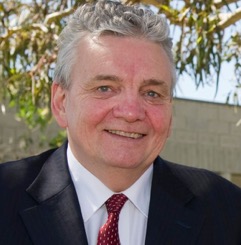 By Dr Bob Moles
By Dr Bob Moles
Presentation to Australian Institute of Judiial Administration (AIJA) Court and Legal Industry Media Officers’ Conference,
Adelaide, 19 Nov 2015
Australian Miscarriages of Justice
As people who represent the media interface with the courts and legal system of Australia, you will be facing unique challenges in the weeks and months ahead.
That the criminal appeal system in all states and territories of Australia fails to comply with international human rights obligations is a situation which cannot be allowed to continue.[1]
Whilst the law has now been changed in South Australia and Tasmania, much more remains to be done there and in the other states and territories.
I did address the AIJA judicial officers conference in Sydney in September 2011, and the biennial conference of District and Co Court judges of Australia and New Zealand in Melbourne in April this year.
I thought it was important to let them know that we do have a serious problem with the issue of miscarriages of justice in Australia, not just in South Australia. It is extremely important that you should also know about the extent of the problem which we face.
The broader context
We have just published Miscarriages of Justice: Criminal Appeals and the Rule of Law, a book for legal practitioners published by LexisNexis. We explain in some detail the serious problems which were recognized by the appeal court in the case of Henry Keogh.[2]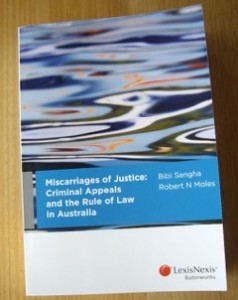
Senior legal officials had incontrovertible evidence of those problems for over 10 years but chose to conceal them.[3] Compelling evidence that this was a wrongful conviction emerged just two days after Mr Keogh was convicted.[4] The claim that there was to be a retrial was contrary to fundamental legal principles and never had any prospect of success.[5]
The unavailability of an individual witness[6], due to ill-health, as claimed by the DPP could never have overcome those basic procedural and substantive obstacles. In a phone call to the witness soon after the announcement was made, he claimed to be in good health.
In our previous book Forensic Investigations and Miscarriages of Justice which was published in Toronto in 2010, we looked at the experiences of wrongful convictions in Australia, Britain and Canada.
The UK CCRC
In terms of institutional responses it was clear that the UK with its Criminal Cases Review Commission had a positive approach. It had been set up as a result of the exposure of the wrongful convictions in the IRA bombing cases – the Birmingham Six and the Guildford Four amongst others. Over roughly the same time that we have been examining cases of miscarriages of justice in Australia, the last 15 years or so, references from the CCRC based in Birmingham have led to the overturning of over 390 criminal convictions, around 100 of those being murder convictions. Four cases have involved people who had been hanged: Derek Bentley 1952 / 1998 – Mahmoud Mattan 1952 / 1998 – George Kelly 1949 / 2003– Timothy Evans 1950 / pardon 1966 compensation 2003 (not a CCRC referral).
Lord Igor Judge (Lord Chief Justice of England and Wales) at the AIJA Sydney conference, said the conviction of an innocent person was a catastrophic failure of the legal system. The UK cases of Treadaway (1996) and Twitchell (1999) exposed systemic abuse of suspects by police amounting to torture which involved ‘bagging the suspect’. As a result, the entire West Midlands Major Crime Squad had to be disbanded.
Is the British legal system held up as a disgrace? No it isn’t. People travel from all around the world to visit the CCRC and to learn about their procedures. We have visited with them on several occasions and have had many discussions with their commissioners and staff.[7]
The Canadian Judicial Inquiries
Canada has had 8 major judicial inquiries, rather like our Royal Commissions, except that they are set up after a serious criminal conviction has been recognized. They all involve international comparative studies. Their reports make interesting reading. They cover a wide range of issues dealing with tunnel vision, noble cause corruption, and the misuse of scientific and other expert evidence.[8] We could learn much from them.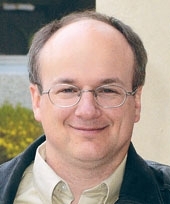
The most recent of those, the Goudge Commission of Inquiry, looked at the work of pediatric forensic pathologist Dr Charles Smith in Toronto.
Counsel assisting, Professor Kent Roach (photo), became the joint author with us of our last book. With Bibi Sangha, we were asked to provide a report on issues arising from the Baby Deaths Inquiry in South Australia.
The Goudge Inquiry found that Dr Smith was lacking in qualifications, experience and expertise, and that he not infrequently fabricated, withheld or otherwise acted improperly in his evidence in criminal trials and parental custody hearings. Amongst the most tragic of the convictions overturned was that of Bill Mullins Johnson, convicted of the rape and murder of his 4 year old niece Valin. It turned out she had not been either raped or murdered. Smith had misinterpreted post-mortem changes for ante-mortem injuries.
The Chief Coroner and Deputy Coroner for Ontario who had improperly protected Smith’s reputation resigned in disgrace and undertook never to practice again.
Did the discovery of this and the many other ‘catastrophic’ cases leave the Toronto forensic services with an indistinguishable legacy of shame? No, it didn’t. They now boast a new $1 billion forensic services facility which is the envy of the world. It has new educational training programs and innovative partnerships with universities.[9]
The Australian experience
I should briefly mention the Tasmanian case of Sue Neill-Fraser in 2010 which utilized forensic evidence based upon preliminary screening tests without confirmatory tests. The same error as occurred in the Edward Splatt and Lindy Chamberlain cases in Australia and the IRA bombing cases in the UK. The forensic scientist in Neill-Fraser said that she could tell whether the luminol test response was to blood as opposed to around 100 other possible substances by the quality of the glow or sparkle response to the luminol. That, of course, has no scientific basis to it. A judge of the Supreme Court of Canada stated when reviewing our previous book:
In their study of miscarriages of justice in Britain, Canada and Australia, Professors Sangha, Roach and Moles identify recurring problems common to the experience of those jurisdictions. These include the use of preliminary tests as conclusive evidence…[10]
After Neill-Fraser’s partner had disappeared the prosecutor told the jury that they could tell by the injuries ‘he would have had’ that he must have been attacked by someone he knew. His body must have been disposed of ‘outside the search area’ because it was not found inside the search area. He must have been killed by someone known to him because if a stranger had killed him why would they have hidden the body? The jury was told it would be ‘nonsense’, ‘ridiculous’ to suggest a stranger would bother to conceal the body of someone they had killed. His wife was convicted of his murder. It was said she must have used a heavy wrench to kill him, because there wasn’t one on the boat. She must have weighed his body down with a fire extinguisher, because there wasn’t one of those on the boat either. The major evidential inferences in this case were derived from the absence of evidence. All of this was quite contrary to established legal principles. Yet the woman remains in prison to this day.
Gordon Wood and Jeffrey Gilham in New South Wales were both convicted on the basis of forensic evidence and prosecutorial submissions which were also contrary to established legal principles as the Court of Appeal in NSW made abundantly clear.[11] The major difference between Australia and the British and Canadian experience is that Australia has, as yet, done very little to respond to the very serious problem of miscarriages of justice.
The South Australian experience
We commenced our public discussion of potential miscarriage of justice cases in South Australia with an ABC 4 Corners program ‘Expert Witness’ broadcast in October 2001.[12] It referred to the fact that Dr Manock had been appointed to be Chief Forensic Pathologist in South Australia in 1968. He had no formal qualifications as a forensic pathologist.[13] Sometime later an advertisement was placed in the British Medical Journal to appoint someone as the Senior Director of Forensic Pathology. Dr Manock, instead of applying for the job, brought legal action against the State of South Australia and the Institute of Medical and Veterinary Science (IMVS) for breach of contract.[14] He said that he took the advertisement to mean that he had been subjected to constructive dismissal because he had been appointed as the head of forensic pathology. The legal proceedings took place over 6 years. The Director of the IMVS said in his evidence that it was an ‘awkward’ situation:
I tried to encourage Dr Manock – to study – and obtain his membership of the Royal College of Pathologists of Australia – because we had a man who had no specialist qualifications in a specialist’s job, and without that this would have been a severe embarrassment.[15]
He added, ‘Dr Manock was unable to do certifying the cause of death because [of] his lack in histopathology.’[16]
Although the civil litigation ended in favour of Dr Manock, that did not make him any better qualified in forensic pathology. He had been made a Fellow of the Royal College of Pathologists of Australasia in 1971. However, this was only because he was exempted from the five years of study and examinations. A spokesman for the Royal College of Pathology said of the oral-only examination, ‘It would probably have been about 20 minutes, and he would’ve been asked questions related to forensic pathology.’[17]
Dr Manock was later appointed to be an examiner of the College of Pathology.[18] Yet, he never undertook any formal written examinations in pathology or histopathology. He never published anything after the mid-1960s.[19] He has publicly stated that he had helped to secure over 400 criminal convictions.[20] Malcolm McCusker QC, the former Governor of Western Australia, has stated that they will all need to be re-examined.[21] Dr Manock has conducted over 10,000 autopsies.[22] They too will need to be re-examined.
Unfortunately the authorities in South Australia have refused to conduct any form of inquiry into the issues which we raised all that time ago. Hopefully, that will soon change. If it was appropriate to have Royal Commissions into cases such as Lindy Chamberlain, Edward Splatt and Eugene McGee, then it is self-evident that we should have one here.
The case reports
We thought that we might be able to contribute further to the public discussion of these issues so we published two further books. A State of Injustice in 2004 covered a number of cases which we thought contained the clearest possible errors of a forensic nature, all involving the work of Dr Manock. Losing Their Grip – the case of Henry Keogh was published in 2006.
Frits Van Beelen involved the murder of a young girl on Taperoo beach in the early 1970s. Dr Manock said that he was ‘virtually certain’ he could determine the time of death to within half an hour by the visual inspection of stomach contents, after they had been frozen and stored for months.[23] A few years later in another case he admitted that this method was ‘very unreliable’.[24] No one thought to go back and review the conviction of Mr Van Beelen who was still serving his lengthy prison sentence. The convictions in the Canadian case of Stephen Truscott (2007)[25] and the New Zealand case of Mark Lundy (2013)[26] have both been overturned because of the unacceptability of this type of evidence.
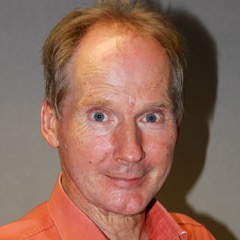 The case of David Szach (1979) involved the shooting murder of a prominent criminal lawyer in Adelaide. The timing of death was crucial.[27] The prosecutor (Brian Martin) said ‘… the objective and scientific evidence means that [the deceased] was dead by 6.40, and the accused was there.’[28] A world-leading authority on the timing of death, based upon post mortem temperatures, said the calculations were ‘speculative’, ‘ill founded’ and ‘cannot be substantiated.’[29]
The case of David Szach (1979) involved the shooting murder of a prominent criminal lawyer in Adelaide. The timing of death was crucial.[27] The prosecutor (Brian Martin) said ‘… the objective and scientific evidence means that [the deceased] was dead by 6.40, and the accused was there.’[28] A world-leading authority on the timing of death, based upon post mortem temperatures, said the calculations were ‘speculative’, ‘ill founded’ and ‘cannot be substantiated.’[29]
The case of Mrs Emily Perry (1981) involved the allegation that she had attempted to murder her husband by the malicious administration of arsenic. In overturning the conviction in the High Court, Justice Murphy said that the prosecution should use people who are substantially and not merely nominally experts in their field.[30] He added, the case ‘revealed an appalling departure from acceptable standards of forensic science..’ and that ‘the evidence was not fit to be taken into consideration’.[31]
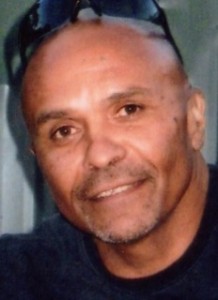 Derek Bromley was convicted of the murder of Stephen Docoza in 1984. Although he completed his non-parole period in 2008, he remains in prison because he maintains that he is innocent of the crimes for which he was convicted. The evidence given at his trial in relation to the cause of death and injuries was inconsistent with the known facts about drowning deaths and the causes of injuries in such cases.[32] When Dr Manock was produced as the chief Crown witness in this case, no mention was made of the previous adverse comments about him by the High Court in the Perry case, despite the fact that the same prosecutor (Brian Martin) appeared in both cases. We know from his recent inquiry into the David Eastman case, that prosecutors must disclose anything and everything which might be of assistance to the defence in such cases.[33]
Derek Bromley was convicted of the murder of Stephen Docoza in 1984. Although he completed his non-parole period in 2008, he remains in prison because he maintains that he is innocent of the crimes for which he was convicted. The evidence given at his trial in relation to the cause of death and injuries was inconsistent with the known facts about drowning deaths and the causes of injuries in such cases.[32] When Dr Manock was produced as the chief Crown witness in this case, no mention was made of the previous adverse comments about him by the High Court in the Perry case, despite the fact that the same prosecutor (Brian Martin) appeared in both cases. We know from his recent inquiry into the David Eastman case, that prosecutors must disclose anything and everything which might be of assistance to the defence in such cases.[33]
The case of Terry Akritidis (1990) involved a possible suicide or murder after he was said to have jumped to his death from a police radio tower. Dr Manock explained that although his body had knocked a hole in the concrete roof of an adjacent building, his ‘clothing’ had protected his body from serious injuries. Dr Manock said that he learned about the severity of injuries in such cases by reading his own previous autopsy reports.[34] He stated that Akritidis had died 12 hours before his body was undressed at the autopsy at 8.15am. This turned out to be two hours after his dead body already stiff with rigor mortis had been found by the police around 6pm the previous evening. No one seemed to notice there was a problem with this.
In the case of Gerald Warren, Dr Manock said that the young aboriginal boy had fallen from a moving vehicle whilst intoxicated and the marks associated with his injuries had been caused by the fabric of corduroy (his trousers). He subsequently learned that he had been beaten with a metal pipe with a thread on the end, and his body had been run over by a ‘ute’. In explaining his inconsistent autopsy reports, Dr Manock said that the pressure from the fabric of corduroy would cause similar injuries to those of a blow from the threaded end of a metal pipe. He said that a person falling out of a moving vehicle would have similar injuries to a person who had a vehicle driven backwards and forwards over their body. Apparently, it was his expert opinion that ‘the forces involved in either scenario are very similar.’[35] Clearly, that was not correct.
The Baby Deaths 1994
In 1994 the Coroner conducted an inquiry into 3 baby deaths.[36] Each died in separate incidents. Two were 3 months of age – one was 9 months of age. Dr Manock said each had died of bronchopneumonia. The Coroner found that was not correct as there were no traces of bronchopneumonia. However, one of the babies had 15 fractured ribs, 2 serious fractures of the skull and a very serious fracture of the spine. The Coroner said that the autopsies had achieved the opposite of their intended purpose – they had closed off inquiries rather than opening them up. He said that Dr Manock claimed to have seen things which couldn’t have been seen, such as signs of bronchopneumonia, because they didn’t exist. He said that the answers given to some questions at the inquiry, by the pathologist, were ‘spurious’.[37] This means, ‘not genuine’, ‘not being what it pretends to be’, ‘illegitimate’.[38] Obviously a serious judgment about an expert witness giving evidence on oath.
The Keogh case non-disclosures
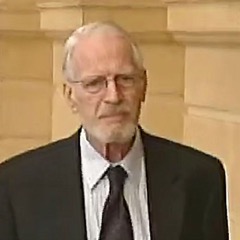 The baby deaths inquiry overlapped with the trial of Henry Keogh in 1995. He was charged with drowning his fiancée in a domestic bath. His trial also involved Dr Manock (photo) as the key expert witness. Unfortunately, the Coroner decided to ‘delay publishing the Findings’ in the baby deaths, until the Keogh trial had been resolved.[39] They were released 2 days after Keogh was convicted. This was a serious error of judgment. That prosecutorial non-disclosure would require the verdict of the jury to be set aside. We did not have to wait for 20 years for the many other errors in the case to emerge. It is remarkable that the Baby Deaths Findings were not used in Mr Keogh’s appeal.[40]
The baby deaths inquiry overlapped with the trial of Henry Keogh in 1995. He was charged with drowning his fiancée in a domestic bath. His trial also involved Dr Manock (photo) as the key expert witness. Unfortunately, the Coroner decided to ‘delay publishing the Findings’ in the baby deaths, until the Keogh trial had been resolved.[39] They were released 2 days after Keogh was convicted. This was a serious error of judgment. That prosecutorial non-disclosure would require the verdict of the jury to be set aside. We did not have to wait for 20 years for the many other errors in the case to emerge. It is remarkable that the Baby Deaths Findings were not used in Mr Keogh’s appeal.[40]
In 2004 the Medical Board of South Australia held an inquiry into the work of Dr Manock in the Keogh case. He gave evidence to the Board which contradicted or undermined his evidence from the trial.[41] He changed his view as to whether it was a left hand or right hand grip – he changed his view as to unconsciousness being a sign of drowning – he accepted there was no scientific support for his differential staining theory as a sign of drowning, but this was only because ‘the rest of the world hadn’t caught up’ to him.[42]
The ‘recantations’ subsequently formed the basis on which the appeal was allowed – but only 10 years later, in 2014. The Medical Board Finding was that he was not guilty of unprofessional conduct.[43] Yet in an internal memo a pathologist on the Board had stated that the autopsy was sub-standard to the point of incompetence;[44] it failed to comply with standards which had been laid down in 1908; the documentation was – manifestly inadequate, even by the lowest of standards. That memo was only disclosed in later judicial review proceedings.[45]
The earlier civil proceedings in which it was said that he was not qualified to certify cause of death – and the High Court opinion to the effect that he was not an expert – were also not raised at this time.
In 2004 the Solicitor-General obtained an independent expert opinion from the Director of the IMVS (a govt instrumentality[46]) in Adelaide. The opinion said that the forensic evidence does not support a homicide scenario and that the most likely explanation is a slip-and-fall accident.[47] The expert sought permission to do further very simple tests to determine whether the bruises were historical and not connected to the time of death. Unfortunately those tests were not done at that time. When undertaken nearly 10 years later, they did in fact confirm that a crucial bruise was historical and not related to the time of death. Three additional expert opinions have also agreed that the forensic evidence did not support a murder hypothesis.
So, by 2004 there are the Coronial Findings from the Baby Deaths Inquiry known but not disclosed in time for trial – and the opinions from the Medical Board and the Solicitor General in 2004 which are not yet disclosed. The petition for referral to the appeal court was subsequently rejected without explanation and without further disclosure. The case would have to languish for another ten years before finding its way to the appeal court.
The systemic problem was that despite the extensive evidence of possible wrongful convictions, the legal system was non-responsive. The procedural rules meant it could not see what obvious to everyone else.
The Court of Appeal – will only allow one appeal[48]
The High Court will not admit fresh evidence
The petition referral procedure involves an ‘unfettered discretion’ and ‘no legal rights’.[49]
In the following years we managed to persuade the Australian Human Rights Commission that the criminal appeal system, throughout Australia, failed [and still fails] to comply with Australia’s international human rights obligations.[50] It had done so for over 30 years since the ICCPR was signed in 1980.
We put a Bill to the parliament of South Australia to establish a Criminal Cases Review Commission [CCRC]. That Bill was referred to the Legislative Review Committee which sought public submissions.[51] The committee recommended:
a new statutory right of appeal
a Forensic Review Panel to refer cases to the appeal court
and an inquiry into the use of expert evidence in criminal trials.
The Attorney-General of South Australia (John Rau, photo) eventually accepted that the petition procedure was inadequate, because it lacked  transparency. He said ‘it is mysterious’, it happens ‘behind closed doors’ – in creating a new right of appeal we are bringing it to the public forum – the courts.
transparency. He said ‘it is mysterious’, it happens ‘behind closed doors’ – in creating a new right of appeal we are bringing it to the public forum – the courts.
The Statute Amendment Appeals Act (SA) 2013 was passed and came into force on 5 May 2013. It created a right to a second or further appeal where there is ‘fresh and compelling’ evidence. The ground of appeal is that there is a ‘substantial miscarriage of justice’. The Attorney-General of Tasmania announced that Tasmania would follow the South Australian lead and enact similar legislation.[52] She said the petition procedure is ‘not the right process’ and ‘decisions should be made by the courts, not the executive government’. The Tasmanian Act came into force on 2 November 2015. Our critique of the new appeal right is that the requirement for fresh and compelling evidence is based upon a mistaken analogy with the double jeopardy provisions. It excludes many cases of wrongful conviction which may concern legal error but not fresh and compelling evidence. Indeed, the examples given by the appeal court in Keogh No 2 mentioned judicial misdirection and wrongful prosecutorial submissions which can be established without the need for fresh evidence.
One of the major outstanding problems is that the South Australian pathologist had completed 10,000 autopsies and, as he said, contributed to over 400 criminal convictions.[53] If he was not qualified to certify cause of death, as his employer stated – or he was ‘not an expert’ as the High Court stated, then we have a problem which exceeds any we have come across on our previous studies of Australian, British and Canadian cases. Merely implementing a new statutory right of appeal and then refusing legal aid and leaving it to the DPP’s office to stem the flow by furious opposition to every attempt to exercise the new appeal right – must backfire eventually.
The DPP – Adam Kimber, photo, going to court to file a nolle prosequi in the Keogh case: Candice Marcus ABC – did oppose the admission of every item of evidence put forward by the appellant in the Keogh appeal. He was unsuccessful on every count. He even opposed the admission of the expert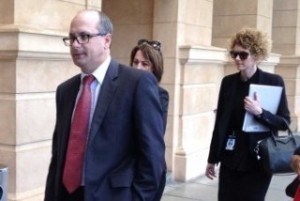 report which the prosecution had itself obtained in 2004 – again unsuccessfully. The judges on the appeal said that despite fairly vigorous cross-examination of the expert witnesses, the DPP hardly made any progress. The progress made on the appeal has been muted by the public statement by the DPP that he would proceed with a further prosecution in the Keogh case – despite the fact that Keogh has served 20 years and the four experts are agreed that the forensic evidence indicates that this was an accident not a crime.
report which the prosecution had itself obtained in 2004 – again unsuccessfully. The judges on the appeal said that despite fairly vigorous cross-examination of the expert witnesses, the DPP hardly made any progress. The progress made on the appeal has been muted by the public statement by the DPP that he would proceed with a further prosecution in the Keogh case – despite the fact that Keogh has served 20 years and the four experts are agreed that the forensic evidence indicates that this was an accident not a crime.
The appeal court has said that the evidence of the four expert witnesses was ‘compelling’ and that the evidence of the pathologist and his deputy in support of a murder hypothesis amounted to no more than unwarranted and unsubstantiated speculation.[54]
The procedural rules in Australia have meant that the system has effectively blocked all attempts to secure a hearing on the merits in any of these cases for around 15 years. The Keogh case has now been finalised which means that the discussion of the issues in relation to his case are no longer sub-judice. Three more cases are being prepared for appeal – the appeal of Frits Van Beelen has already been filed and those of David Szach and Derek Bromley are being prepared. I venture to suggest that it will not be much longer before we eventually have a Royal Commission to help us get to the real causes of these terrible miscarriages of justice.
Clearly it is important to develop proper systems to cope with the identification, analysis and responses to miscarriages of justice. It has been reported in the media, for example, that Keogh may not be able to obtain compensation because he has not secured an acquittal or been found ‘not guilty’. ‘There is no avenue within SA law for a former prisoner to seek financial compensation.’[55] The President of the SA Law Society was quoted as saying that ‘ex gratia payments were the only avenue for former prisoners seeking compensation.’ That is not correct. A nolle prosequi is a termination of the proceedings in favour of the accused.[56] That is a sufficient basis for a person to pursue damages for malicious prosecution which is the normal basis for an action in these circumstances. That may involve establishing a lack of reasonable and probable cause in pursuing the prosecution.[57] In the matter of Roseanne Beckett, after having obtained a nolle prosequi, she was recently awarded $2.3m in damages which were increased to $4m to take account of interest on those damages.[58]
Keogh’s circumstances and length of sentence would lead to a substantially greater award – if successful. The prospect of the State of South Australia defending such an action in light of its statement some 40 years earlier, on oath, that the pathologist was not qualified to certify cause of death, and the many subsequent non-disclosures by state officials, would certainly lead to some very interesting litigation – and most interesting material for court reporters. But don’t get too excited – there is always the prospect of a settlement subject to a confidentiality agreement – and then it would be our turn to speculate.
ENDS
* Dr Bob Moles is legal academic, researcher and author, and a principal of Networked Knowledge http://netk.net.au
This speech is at: http://netk.net.au/SA/AIJA2015.pdf
[1] 25 November 2011, Submission of Human Rights Commission to the Legislative Review Committee of South Australia, particularly [2.6].
[2] See Bibi Sangha and Robert Moles, Miscarriages of Justice: Criminal Appeals and the Rule of Law, [Miscarriages] 2015, LexisNexis, chap 10 ‘The South Australian Cases’.
[3] For example, the report of Dr Vernon-Roberts, submitted to the Solicitor-General of South Australia, Mr Kourakis QC, in 2004 but not disclosed until December 2013: ‘Professor Vernon-Roberts’ report of 2004 was released to the applicant’s advisors on 5 December 2013’, R v Keogh (No 2) [2014] SASCFC at 136. It would be important to know if the content of that report was disclosed to the Attorney-General at that time.
[4] This was when the Coroner of South Australia released his report on the Baby Deaths, a report which had been completed before Mr Keogh’s trial was concluded, but concealed until after the trial concluded. It was a serious prosecutorial non-disclosure. See affidavit of Michael Sykes, solicitor, 7 November 1996.
[5] R v Keogh (No 2) 2014 SASCFC 136 stated that the forensic evidence in the case as to the ‘mechanism of murder’ was no more than ‘unsustainable’, ‘subjective’, ‘prejudicial’ speculation which was not probative of any issues at trial. That recognition, ‘fundamentally changed the evidential landscape’. It is clear that a retrial cannot he held on a basis which is fundamentally different to that of the earlier trial. See Miscarriages at [11.5.2] ‘Restriction on presenting a different case at trial’, discussing R v Taufahema (2007) 228 CLR. Also, a verdict of a jury, inconsistent with uncontroverted expert evidence is necessarily an unreasonable jury verdict, see R v Klamo (2008) 18 VR 644 at [45] citing R v Matheson [1958] 1 WLR 474 at 478 discussed in Miscarriages at [9.6].
[6] The witness was said to have been Dr Colin Manock: ‘The DPP said in a statement he reviewed the case after witness Dr Colin Manock fell ill and believed “it was not appropriate to proceed without the witness giving evidence and being cross-examined”’, ABC News 14 November 2015. As to the extensive problems with Dr Manock’s evidence, see Miscarriages at [10.15]. After those findings by the Court of Appeal (and the earlier findings referred to in this report), he could never (and should never) have been produced as an expert witness.
[7] David Jessel, a leading investigative reporter in the UK was appointed as one of the first Commissioners. He said some years ago that the Henry Keogh case had all the classic signs of a miscarriage of justice, see 18 July 2010, ABC Background Briefing ‘Reaonable Doubt’, Hagar Cohen.
[8] The Royal Commission on the Donald Marshall Jr. Prosecution (1989); The Commission on Proceedings Involving Guy Paul Morin (1998); The Inquiry Regarding Thomas Sophonow; The Lamer Commission of Inquiry Pertaining to the Cases of Ronald Dalton, Gregory Parsons and Randy Druken (2006); Report of the Commission of Inquiry into Certain Aspects of the Trial and Conviction of James Driskell (2007); Report of the Inquiry into the Wrongful Conviction of David Milgaard (2008); Report of the Inquiry into Pediatric Forensic Pathology (2008).
[9] 28 October 2013, Toronto Star, ‘Ontario’s forensic pathologists better equipped in “search for truth”.’ Bibi Sangha and Bob Moles visited the Centre in October 2015.
[10] 2 March 2011, ‘The Challenges of Scientific Evidence’ the Hon Thomas A Cromwell, Judge of the Supreme Court of Canada, The Macfadyen Lecture 2011 – The Scottish Council of Law Reporting.
[11] Their cases are discussed in detail in Miscarriages chaps 8 and 9.
[12] At the time, the Attorney-General of South Australia, Michael Atkinson, explaining why he was to take no action in relation to the matter, told the parliament that those behind the program had been ‘mischievous’, had ‘verged on dishonesty’, and had ‘an axe to grind’, but hid it. See Losing Their Grip, chap 7, ‘There was no miscarriage of justice’, p 115,
[13] LRC submission p28. ABC 4 Corners “Expert Witness”. [‘LRC Submission’ refers to the Sangha / Moles submission to the Legislative Review Committee of South Australia when looking at whether to establish a Criminal Cases Review Commission. The Bill, submissions and other materials are available here.]
[14] CH Manock v State of South Australia and the Institute of Medical and Veterinary Science, 1978, South Australian Supreme Court 2355 of 1978.
[15] Dr Bonnin, trial transcript, pp 117-125, cited in A state of Injustice chapter 5, p 83, LRC submission p28,
[16] Ibid.
[17] LRC submission p29, A state of Injustice chapter 5, p 83, Dr Weedon, ABC 4 Corners “Expert Witness”.
[18] 3 August 2006, Channel 7 Today Tonight (Adelaide) ‘Graham Archer: [the] examiner for the College was none other than disgraced forensic pathologist Dr Colin Manock.’
[19] Losing Their Grip, chapter 11, p 195.
[20] 5 June 2011, Channel 9, 60 Minutes ‘Reasonable Doubt’.
[21] 24 June 2015, the Hon Malcolm McCusker, AC CVO QC, Address to the Anglo-Australasian Lawyers Society WA.
[22] See Losing Their Grip, chap 4, ‘The Trials’.
[23] The case of Frits Van Beelen 1972: See LRC submission p32 and A state of Injustice chapter 5 ‘Time and Tide’.
[24] In the matter of Wendy Cooke 1984, CH Manock XXN at [829].
[25] Re Truscott 2007 ONCA 575
[26] Lundy v The Queen (New Zealand) [2013] UKPC 28 (7 October 2013).
[27] The David Szach case 1979: See A state of Injustice chapter 6, and Report of Professor Bernard Knight, Professor of Forensic Pathology, Home Office Pathologist, 14 July 1994, cited in LRC submission p32.
[28] Trial Transcript p 1557 (emphasis added) cited in Petition for David Szach 2006 [35].
[29] Professor Bernard Knight Report 14 July 1994.
[30] A state of Injustice chapter 7 p 115.
[31] A state of Injustice chapter 7 pp 115-6.
[32] See the Derek Bromley Homepage, and the Petition to the Governor of South Australia November 2011.
[33] The prosecution duty of disclosure is discussed at Miscarriages [8.5] and the Eastman case at Miscarriages [8.16].
[34] The case of Terry Akritidis: A state of Injustice chapter 9 p 132.
[35] The case of Gerald Warren: A state of Injustice chapter 6 p 103.
[36] The baby death details referred to here were set out in LRC submission p37.
[37] A state of Injustice chapter 10 “Seeing Things – the Baby Deaths Inquest 1994”.
[38] Concise Oxford Dictionary.
[39] Affidavit of Michael Sykes, solicitor, 7 November 1996; Losing Their Grip, chapter 7 p118.
[40] See the Affidavit of Michael Sykes, solicitor, 7 November 1996, where it is reported that defence counsel said that he could not see how the Findings would assist Mr Keogh’s appeal, and that he only had a chance to read them at an ‘embryonic’ level before Mr Keogh’s appeal was heard 3 months later.
[41] These points are set out in Losing Their Grip, chap 11, ‘Getting Closer to the Truth’.
[42] Transcript Medical Board Hearing at p 339.
[43] 22 June 2005 Report of the Medical Board Henry Keogh v Colin Henry Manock.
[44] 16 March 2005, internal memo from Dr Mark Coleman to members of the Medical Board. The other medical specialists on the Board expressed their agreement with it, (emphasis added).
[45] Keogh v The Medical Board Of South Australia & Anor [2007] SASC 342.
[46] R v Keogh (No 3) [2014] SASCFC 137.
[47] R v Keogh [2014] SASCFC 20 p 5, ‘1.20 Report of Professor Vernon-Roberts to Mr Kourakis QC (as he then was) re causes of death dated 22.11.04, discovered 14.2.13’. The former Solicitor-General is now the Chief Justice of South Australia.
[48] The various rules are discussed in Sangha / Moles “Post-Appeal Review Rights” (2012) 36 Crim LJ 300 and also in Miscarriages chap 3 ‘Re-opening criminal appeals’ and chap 4 ‘Post-appeal petitions’.
[49] See Bibi Sangha and Robert Moles “Mercy or Right” 14 FLJ 292 and Miscarriages chap 4 ‘Post-appeal Petitions’.
[50] The Australian Human Rights Commission Submission at [2.6] and Miscarriages chap 6 ‘The right to a second or subsequent appeal.’
[51] The LRC Report, submissions and other documents are available at http://netk.net.au/AppealsHome.asp
[52] The draft Bill and media releases are available at http://netk.net.au/TasmaniaHome.asp
[53] 5 June 2011, Channel Nine, 60 Minutes, ‘Reasonable Doubt’.
[54] R v Keogh (No 2) [2014] SASCFC 136.
[55] 14 November 2015, Sean Fewster, The Advertiser, ‘Keogh case shock: Free for now, but no pay day’.
[56] Beckett v NSW [2013] HCA 17.
[57] The action for malicious prosecution is discussed in Miscarriages at 11.7.1.
[58] 10 November 2015, ABC, ‘Roseanne Beckett: Woman who wrongfully served 10 years in jail awarded $4m in malicious prosecution case’

